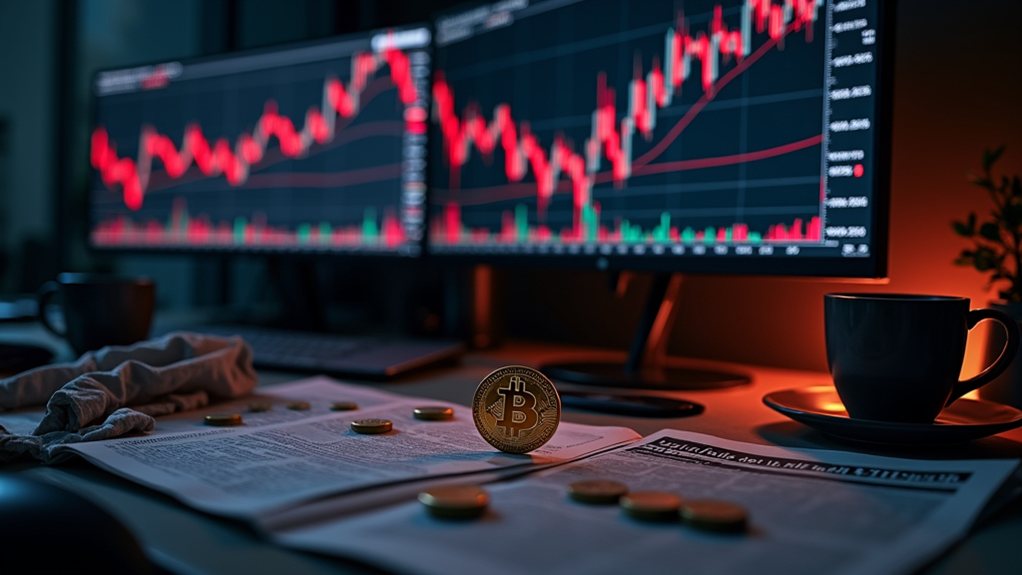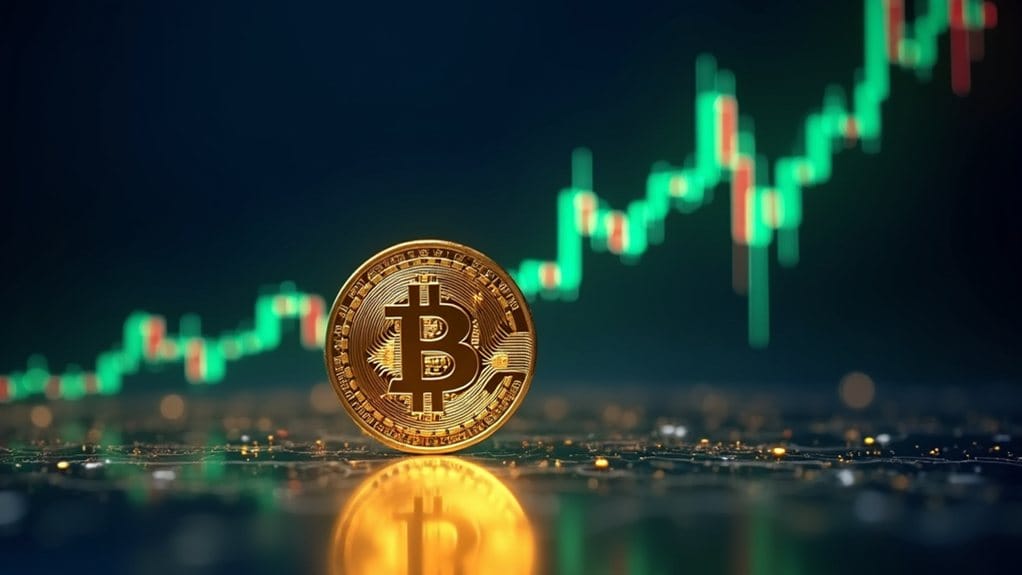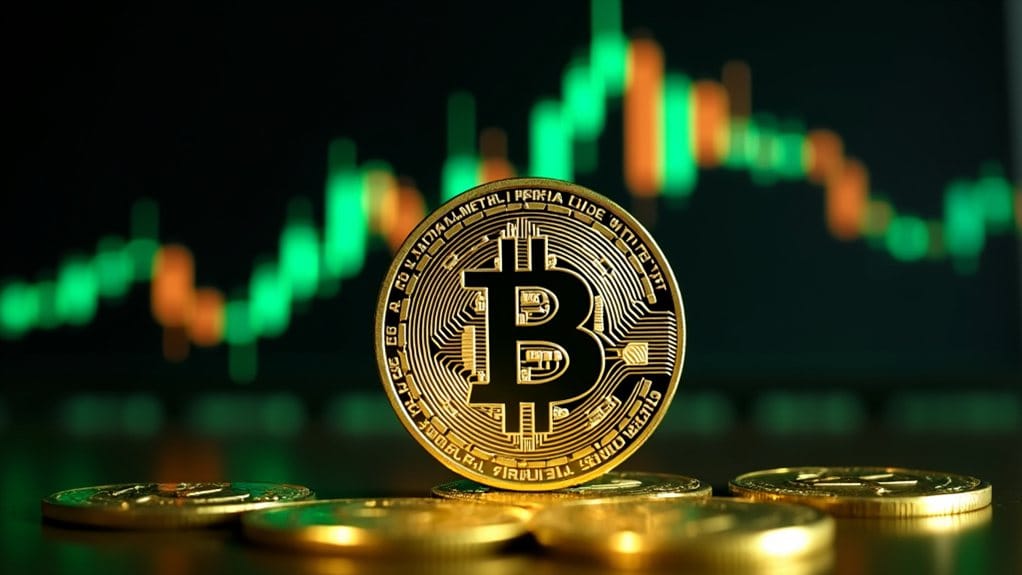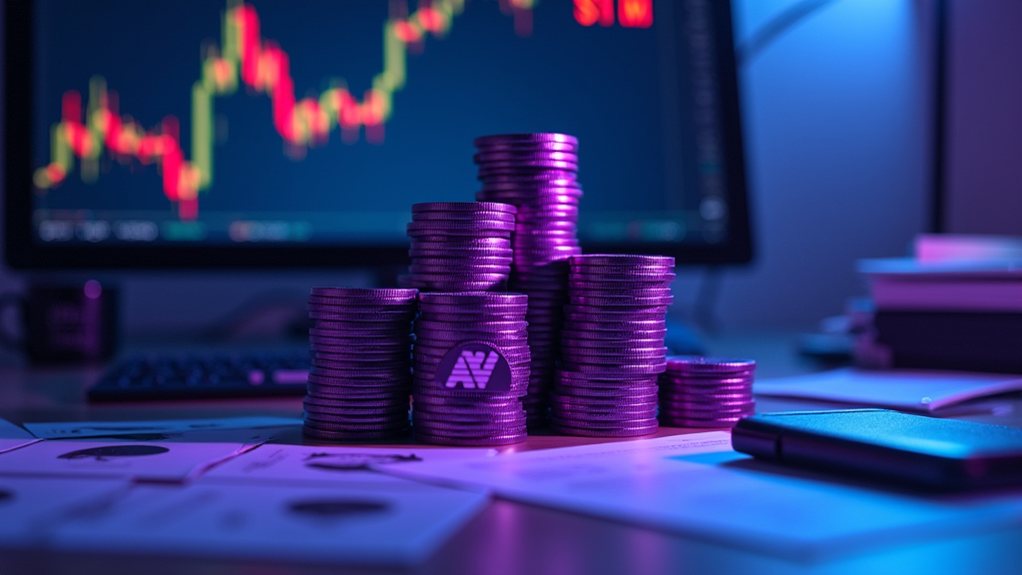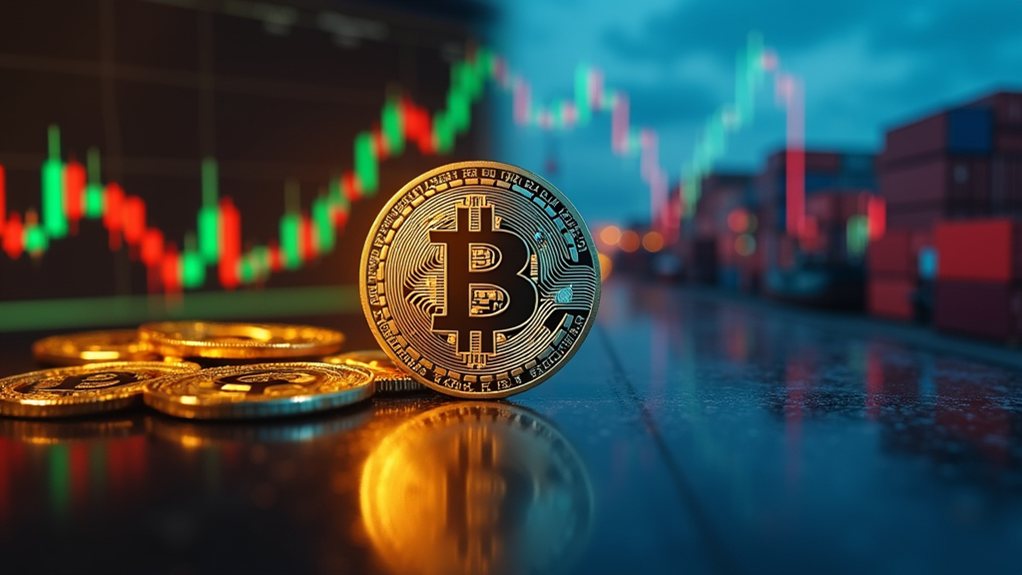Persistently, the altcoin market has faced considerable headwinds throughout the initial half of 2025, as Bitcoin’s dominance continues to cast a long shadow over alternative cryptocurrencies. Market data reveals Bitcoin’s overwhelming dominance reaching unprecedented levels, effectively suffocating altcoin growth potential despite broader crypto market expansion. Economic conditions, characterized by lingering high interest rates and quantitative tightening policies, have further constrained liquidity necessary for altcoin prosperity. This challenging environment reflects how previous altcoin cycles thrived on liquidity that central banks’ current policies are actively removing from financial markets.
The altcoin market struggles beneath Bitcoin’s oppressive shadow, starved of liquidity amid tightening economic conditions.
Regulatory uncertainty remains a formidable obstacle for altcoin projects, with institutions hesitating to allocate considerable capital amid unclear compliance frameworks. This regulatory ambiguity, coupled with extreme market volatility, creates an environment where risk-averse investors gravitate toward Bitcoin’s relative stability. Privacy-focused coins like Verge (XVG) face particularly intense regulatory scrutiny due to their anonymity features.
Technological limitations exacerbate these challenges, as numerous blockchain platforms struggle with scalability issues that hinder transaction throughput, user experience, and widespread adoption. Savvy investors are implementing stop-loss orders to protect their positions during this extended period of altcoin underperformance.
The Bitcoin halving event has intensified these dynamics, redirecting attention and capital toward Bitcoin as institutional investors increasingly view it as digital gold. Analysts project Bitcoin could reach valuation milestones of $150,000 by year-end, while altcoins may continue lagging behind historical performance metrics.
Even Ethereum, despite its forthcoming Pectra upgrade aimed at enhancing staking mechanisms and improving scalability, faces mounting competition from faster networks like Solana and Sui.
Meme coins exemplify the altcoin market’s difficulties, with projects like Dogecoin struggling to maintain relevance without substantive technological advancements or clear utility cases. DeFi and AI-focused tokens show promise but remain vulnerable to Bitcoin’s gravitational pull on market capital.
Market sentiment indicators suggest investors have adopted a considerably more cautious approach toward altcoin exposure compared to previous bull cycles.
For the altcoin ecosystem to regain momentum, several critical developments must converge: regulatory clarity, technological breakthroughs addressing scalability concerns, and a shift in macro-economic policies toward accommodative measures.
Without these catalysts, the altcoin market’s struggles may persist beyond current expectations, potentially resulting in a prolonged period of underperformance relative to Bitcoin’s trajectory throughout 2025 and beyond.
